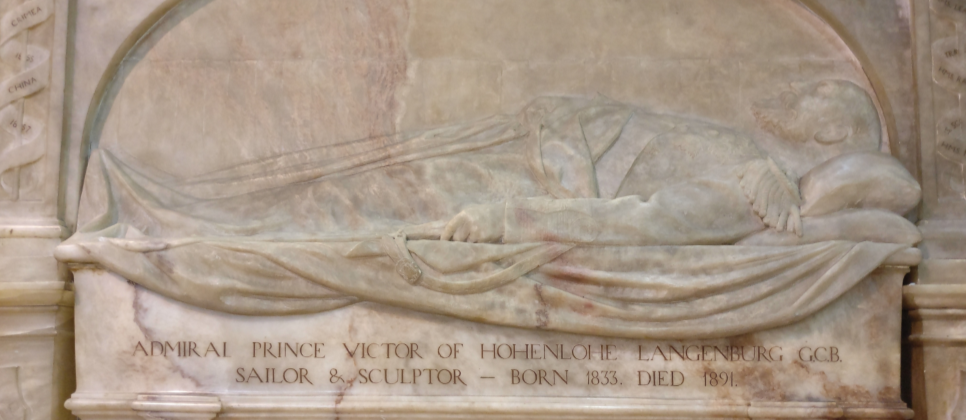
Prince Victor of Hohenlohe-Langenburg was born on 11 December 1833 in Wurttemberg, Germany. The third and youngest son of Prince Ernst of Hohenlohe-Langenburg and his wife Princess Fedore, Queen Victoria’s elder half-sister.
He ran away from school in Dresden and was sponsored by Queen Victoria (being her nephew) to enter service in the Royal Navy at the age of 14 in 1848. He retired in 1866 from ill health, having risen to the rank of Captain, and in retirement was promoted to Retired Rear Admiral (1876), Retired Vice Admiral (1881) and finally Retired Admiral (1887).
He was married in London in 1861 to Laura Williamina Seymour (her father was a distant nephew of Jane Seymour, wife of Henry VIII). The marriage was considered unequal by his German relatives and so had to be morganatic, thus preventing any titles or privilege being passed on to his spouse or children. His wife was however created Countess Gleichen and following his marriage he took on the title of Count Gleichen.
Soon after leaving the Navy, the Naval Bank where all his savings resided failed and having been largely disinherited by his family at the time of his marriage, Queen Victoria granted them a suite of grace and favour apartments at St James’ Palace.
After retiring from active service he took up a career as a professional sculptor, training for three years in the studio of William Theed and then setting up his own studio in St James’ Palace.
His most important work is a colossal statue of Alfred the Great made for the main square in Wantage, Oxfordshire. Two local examples of his work are at Royal Holloway College in Egham – a statue of Queen Victoria in the North Quadrangle and the statue of Thomas Holloway with this wife Jane in the South Quadrangle.
Prince Victor had four children: Countess Feodora (Feo), Count Albert (Edward), Countess Victoria (Valda) and Countess Helena.
In 1885 Queen Victoria permitted the couple to revert to the names Their Serene Highnesses Prince and Princess Victor of Hohenlohe-Langenburg, however this was not extended to their children who remained Count and Countesses.
Queen Victoria also appointed him Governor and Constable of Windsor Castle in 1855 and he received the KCB (Knight Commander of the Bath) in 1866 and GCB (Knight Grand Cross of the Bath) in 1887. The whole family were part of Queen Victoria’s wider family and social circle and visits were often mentioned in Her Majesty’s journals.
His success as a sculptor enabled him to be able to build a small country house in Sunningdale – St Bruno House in Charters Road.
He died on 31 December 1891 and is buried on the north side of the churchyard at Holy Trinity Church Sunningdale. Inside the church there is a large wall mounted marble memorial sculpture to him created by his daughter Feo, a distinguished sculptor like her father who trained at the Slade School of Art.

There is also an arts and crafts style memorial to Prince Victor’s wife, Princess Laura, who died in 1912, on the west wall behind the font placed by their children.
